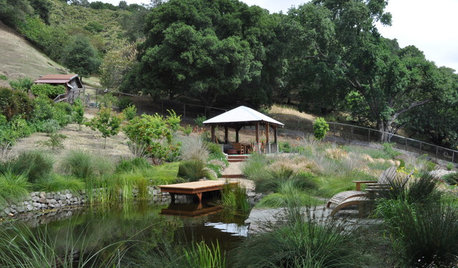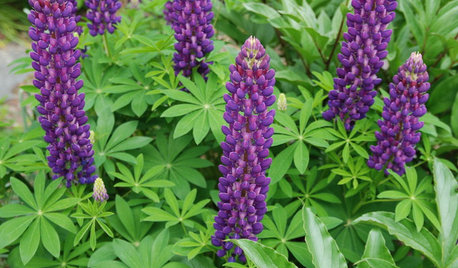Topdressing with compost
growseattlesun
14 years ago
Related Stories

GARDENING GUIDESHow to Pick a Mulch — and Why Your Soil Wants It
There's more to topdressing than shredded wood. Learn about mulch types, costs and design considerations here
Full Story
GARDENING GUIDESGarden Myths to Debunk as You Dig This Fall and Rest Over Winter
Termites hate wood mulch, don’t amend soil for trees, avoid gravel in planters — and more nuggets of garden wisdom
Full Story
GARDENING GUIDESSolve 3 Common Landscape Problems — With More Plants
Sometimes the best defense is a good offense
Full Story
GARDENING GUIDESCalifornia Gardener: What to Do in July
Active green thumb or not, top priorities for peak fruit and veggie season: watering, feeding, keeping up with growth
Full Story
GARDENING GUIDESNew Ways to Think About All That Mulch in the Garden
Before you go making a mountain out of a mulch hill, learn the facts about what your plants and soil really want
Full Story
FRONT YARD IDEASBefore and After: Front Lawn to Prairie Garden
How they did it: Homeowners create a plan, stick to it and keep the neighbors (and wildlife) in mind
Full Story
GARDENING GUIDES10 Tips to Start a Garden — Can-Do Ideas for Beginners
Green up your landscape even if you're short on time, money and knowledge, with these manageable steps for first-time gardeners
Full Story
GARDENING GUIDES7 Ecofriendly Gardening Ideas That Also Cut Chore Time
Spend less time weeding, less money watering and more moments just sitting back and enjoying your healthy garden
Full Story
CENTRAL PLAINS GARDENINGCentral Plains Gardener's March Checklist
Let enthusiasm bubble up along with fountains this month, as you tidy the garden to prep for wonders to come
Full Story
GARDENING GUIDESNortheast Gardener's May Checklist
Tiptoe through the lupines or dance under a flowering tree; warm weather brings abundant garden wonders to behold in the Northeast U.S.
Full StoryMore Discussions









Embothrium
gardengal48 (PNW Z8/9)
Related Professionals
Maple Valley Landscape Architects & Landscape Designers · Graham Landscape Architects & Landscape Designers · Allentown Landscape Contractors · Brentwood Landscape Contractors · Berwyn Landscape Contractors · Eustis Landscape Contractors · Pahrump Landscape Contractors · Sammamish Landscape Contractors · Seminole Landscape Contractors · Smyrna Landscape Contractors · Annapolis Fence Contractors · Carlsbad Fence Contractors · Coram Fence Contractors · Hernando Fence Contractors · Salt Lake City Fence ContractorsEmbothrium
beluga01
gardengal48 (PNW Z8/9)
beluga01
gardengal48 (PNW Z8/9)
grrrnthumb
grrrnthumb
rain2fall
grrrnthumb
rain2fall
botann
gardengal48 (PNW Z8/9)
grrrnthumb
gardengal48 (PNW Z8/9)
grrrnthumb
beluga01
ian_wa
gardengal48 (PNW Z8/9)
beluga01
growseattlesunOriginal Author